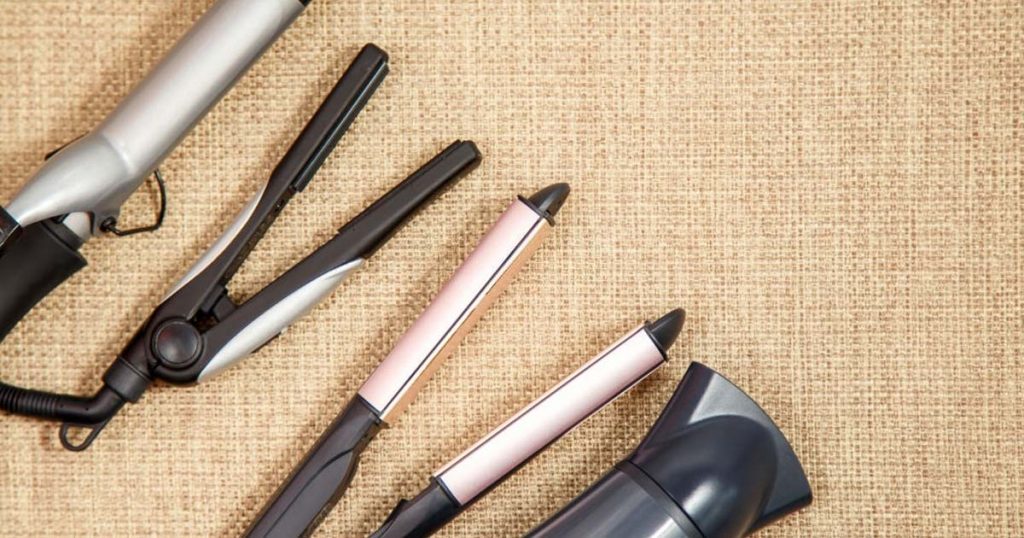Before anything else, I’d like to take a moment to let everyone know that my articles will be appearing on a monthly basis, rather than weekly. This is due to the fact that it’s difficult to come up with new ideas for my articles. There’s only so much you can say about hair. I will try to add additional articles as they are written, but for the most part, my articles will be written and published on a monthly basis
Also, in case there are any clients of mine who weren’t made aware of this fact, I have left my job as a stylist in Harrisburg. I will be doing hair now at the Trade Secret salon at the Lycoming Mall in Williamsport. I am very excited about this opportunity, and I’m looking forward to seeing all my old friends and clients from Harrisburg. I’ll also be very happy to see new clients, so if anyone is in the Williamsport area or will be in the future, please stop on by the salon.This month’s topic is the effect of heat on the hair. This will help you understand why heat can be damaging, and how in some instances, heat can be a good thing for the hair. The type of heat most people are familiar with is the heat used in styling the hair. Heat styling is also called thermal styling, and it utilizes such tools as blowdryers, curling irons, crimping irons, pressing combs, thermal brushes, flat irons, and so forth.
It is always advisable to allow the hair to dry using natural heat, but in the real world this is often impractical. Heat appliances work by breaking the hair’s hydrogen bonds, thereby making the hair curl around the barrel of a curling iron, or become straight by using a flat iron. The effects of thermal styling are temporary. After the heat breaks the bonds, the cool surrounding air essentially “freezes” the hair into the desired style. The style stays put until hydrogen (in the form of moisture), is re-introduced. That is why hair becomes frizzy and unmanageable in humid conditions. Water will always make the hair revert to its natural state of curliness.
Frequent thermal styling can damage the hair however. Hot air, such as the kind that comes from a blowdryer, has the tendency to open the cuticle layers of the hair. The cuticle is composed of tiny overlapping scales that can only be seen under magnification. Cuticle damage is the most common form of hair damage, and in most cases can be remedied by using an acidic conditioner. But conditioners can only do so much. Too much hot air will blow the cuticles so far open that even the best conditioners will fail to make a difference. If the cuticle layers are damaged too often, the hair loses its strength and integrity, and breakage will occur.
The heat emitted by a curling iron can be beneficial in some circumstances. If the cuticle layers are open too much, and the hair is frizzy in appearance, you can smooth the cuticle back down with the iron. This is almost like ironing wrinkles from clothing. It is necessary to prepare the hair first though before thermal styling. There are many products that are made especially for thermal styling. Matrix makes thermal-active setting spray that will do the job quite effectively. You spritz the hair prior to curling, and it minimizes the damage caused by the heat. Curling irons are typically harmless unless the heat setting is too high. Set the heat on low for fine or thin hair, and only use the high heat setting on gray hair, coarse hair, or resistant hair that doesn’t take to curling very well.
It may seem like opening the cuticle layer is a bad thing (in most instances it is), but there are times when it is a good thing. If you have dry hair, you may go to the salon to receive conditioning treatments. A mixture of moisturizers are applied to the hair and you may have to sit under a dryer for a few minutes. The heat from the dryer will open up the cuticle layers, which allows the conditioner to penetrate deep inside the hair. This same technique is used to sometimes color resistant hair. If your usual hair color doesn’t take as well as it used to, you might need to heat the hair first. We call this “pre-softening”, the technique used to open the cuticle prior to a service in order to enhance penetration of a color, perm, or conditioner.As you can see, heat can either be good or bad, depending on how it is used. Sometimes it causes damage, while other times it repairs it. The general consensus is that heat is bad, heat is destructive for the hair, and so on…but this is a myth, pure fiction. Anything you do to the hair can be bad, if it is done too often, whether it be coloring, bleaching, thermal styling, braiding, or even brushing. As with most things in life, the key is moderation.

